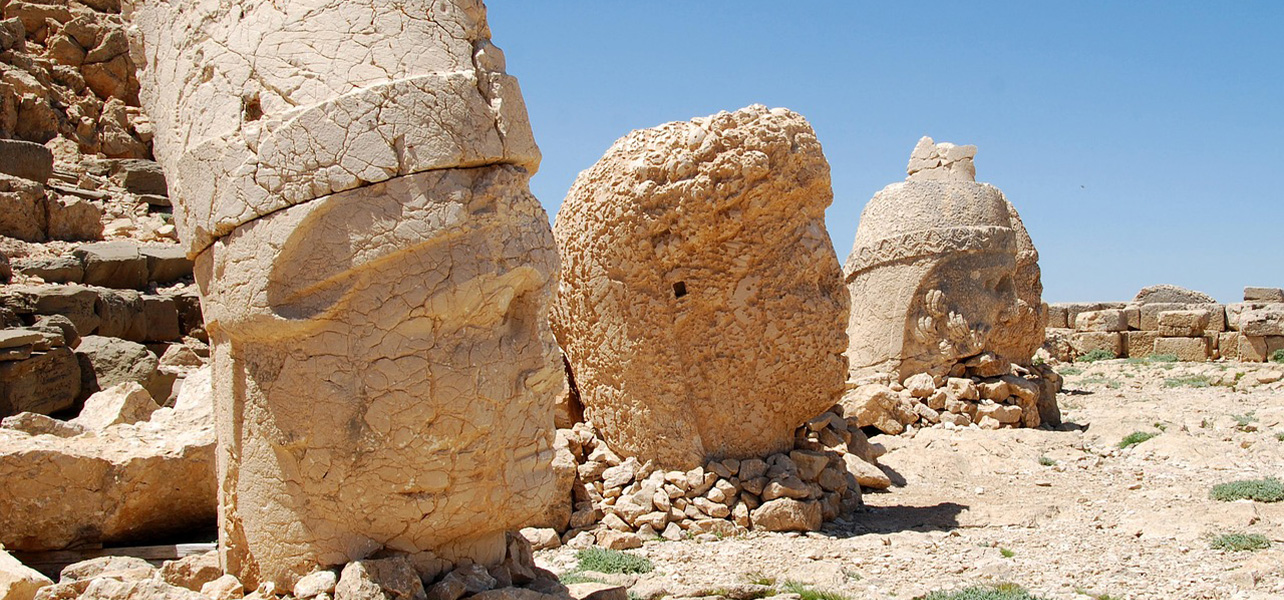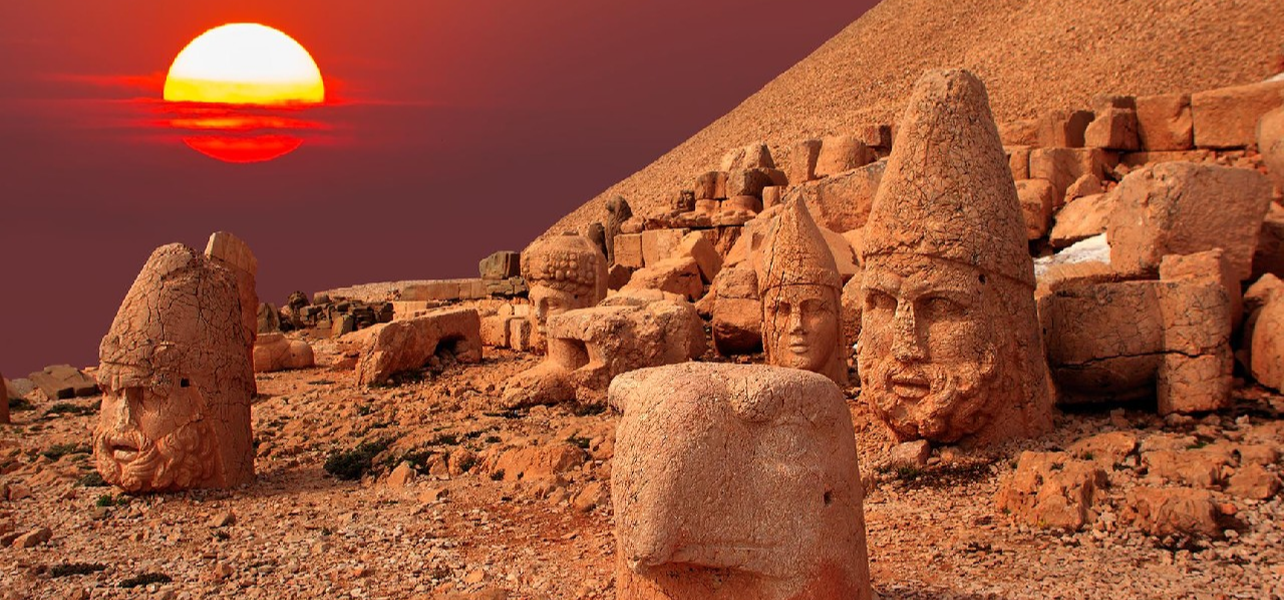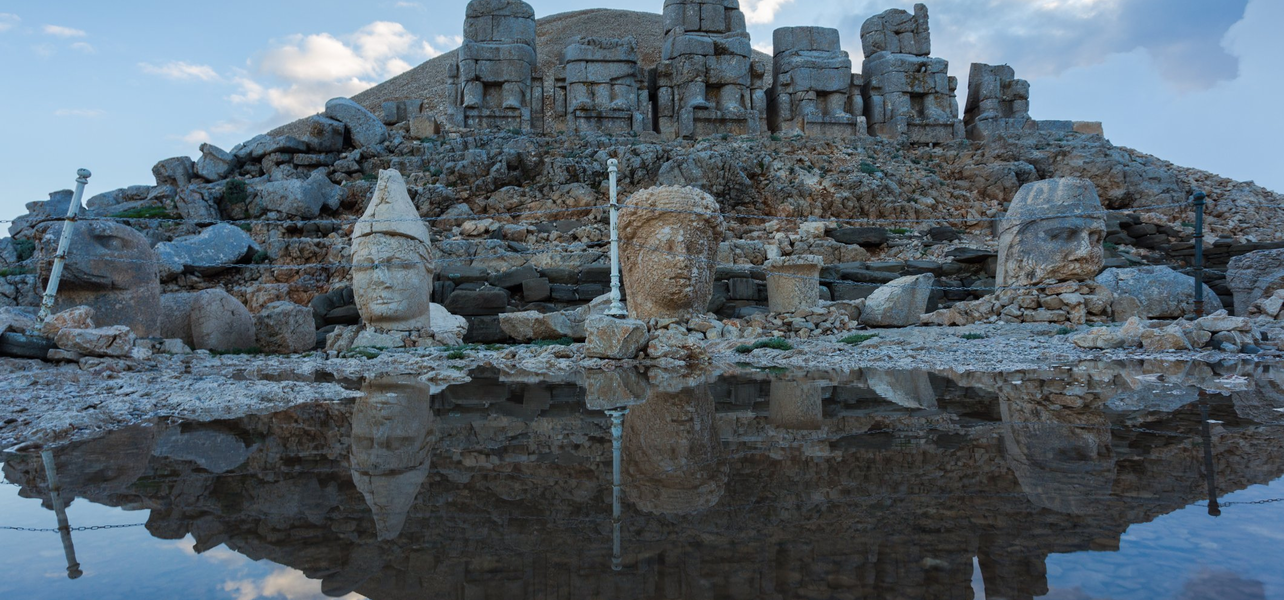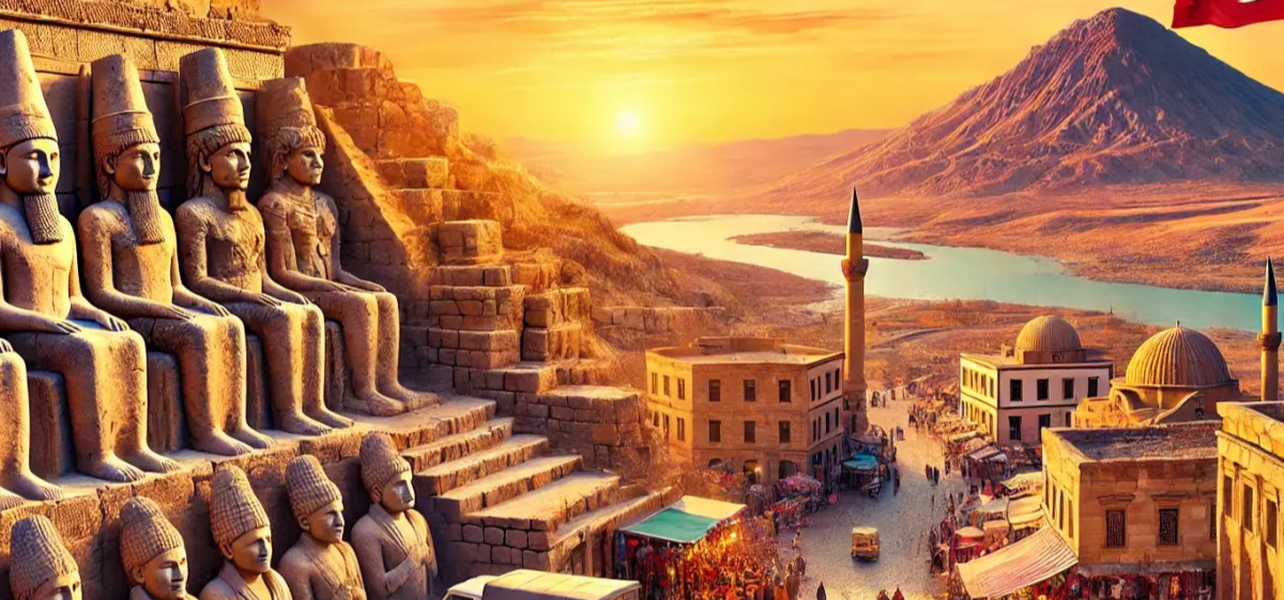Mount Nemrut and Southeastern Anatolia Cultural Tour
Rainbow Mountain ValleyVerified
Gallery
Description
Mount Nemrut and Southeastern Anatolia: A Journey Through Myth and History
Embark on an enchanting expedition to the mystical landscapes and profound cultural heritage of Southeastern Anatolia, highlighted by the awe-inspiring Mount Nemrut. This carefully curated tour invites you to the summit of this UNESCO World Heritage site, home to the colossal stone statues of ancient deities, and guides you through the historical and cultural treasures that define this fascinating region of Turkey.
Witnessing the Majestic Sunrise at Mount Nemrut
Mount Nemrut, a jewel in Turkey's crown of UNESCO World Heritage sites, stands as a captivating confluence of archaeological mystery and natural wonder. Nestled in the heart of Southeastern Anatolia, this ancient sanctuary is celebrated for its monumental stone statues that have stood as silent sentinels of history for millennia. Commissioned by King Antiochus I of Commagene in the 1st century BC, these colossal figures depict a pantheon of gods, majestic eagles, and formidable lions, representing a unique syncretism of Greek and Persian cultural influences. The zenith of any visit to Mount Nemrut is undoubtedly witnessing the breathtaking sunrise. As the first golden rays of dawn kiss the colossal heads, the scene transforms into an awe-inspiring spectacle, imbued with a mystical ambiance that transcends time.
Exploring the Legacy of the Ancient Kingdom of Commagene
The evocative ruins of the Commagene Kingdom whisper tales of a sophisticated civilization that flourished in this region over two millennia ago. King Antiochus I, a visionary ruler, sought to bridge diverse cultural traditions, and the grand tomb sanctuary he erected atop Mount Nemrut serves as a monumental testament to this ambition. The site encompasses a massive artificial burial mound, believed to be the final resting place of the king, flanked by terraces adorned with gigantic seated statues. The intricate inscriptions and elaborate reliefs that adorn the site offer invaluable insights into the religious beliefs, political landscape, and artistic expressions of this ancient kingdom.
Discovering the Cultural Tapestry of Southeastern Anatolia
Beyond the majestic heights of Mount Nemrut, the Southeastern Anatolia region unfolds as a rich tapestry of cultural and historical treasures waiting to be explored. The ancient city of Şanlıurfa, often reverently referred to as the "City of Prophets," beckons with its sacred Balıklıgöl (Fish Lake), believed to be the very site where Prophet Abraham miraculously survived being thrown into a raging fire. In close proximity lies Göbekli Tepe, the world’s oldest known temple complex, a groundbreaking archaeological discovery that continues to unravel the mysteries of early human civilization and ritualistic practices. The region's vibrant and bustling bazaars, characterized by their traditional stone architecture and the enticing aromas of local crafts and spices, alongside the authentic and welcoming nature of its people and the unique flavors of its cuisine, all contribute to the undeniable charm of this extraordinary journey.
Indulging in the Culinary Delights of the Region
Southeastern Anatolia stands as a veritable paradise for culinary enthusiasts, offering a rich and diverse gastronomic landscape. Delectable dishes such as succulent kebabs prepared with regional spices, flavorful içli köfte (stuffed meatballs), and an array of tantalizing mezes showcase the depth and richness of the local culinary traditions. The cities of Şanlıurfa and Gaziantep are particularly renowned for their fiery and aromatic dishes, as well as their exquisite traditional desserts, including the globally celebrated baklava and the rich, cheesy künefe. A visit to a local restaurant provides an authentic and immersive opportunity to experience the true and unforgettable taste of Anatolia.
Optimal Timing and Essential Travel Advice
Best Time to Visit
The most favorable seasons for embarking on a journey to Mount Nemrut and the surrounding region are spring and autumn, when the weather is typically mild and comfortably conducive to exploration. The summer months can be quite hot, while winter can bring cold temperatures and even snow at higher elevations. Spring and autumn offer pleasant temperatures and beautiful landscapes.
Essential Travel Tips
The ascent to the summit of Mount Nemrut involves some walking, particularly on uneven terrain, so comfortable and sturdy walking shoes are highly recommended. Given the early morning start required to witness the sunrise, and the elevation of Mount Nemrut, it is also essential to bring warm layers of clothing, even during the warmer months. Exploring the region with a knowledgeable local guide can significantly enhance your experience, providing deeper context and invaluable insights into its rich and complex history, archaeology, and cultural nuances. Be prepared for varying terrain and altitudes as you explore the diverse sites of Southeastern Anatolia.
A meticulously planned journey to Mount Nemrut and Southeastern Anatolia offers an unparalleled and deeply rewarding combination of awe-inspiring history, breathtaking and otherworldly landscapes, and profound cultural discoveries, solidifying its place as an unforgettable destination for intrepid travelers seeking an authentic and off-the-beaten-path adventure in Turkey.
Highlights
sunrise
Explore the ancient Commagene Kingdom and its colossal statues
Visit the historic city of Şanlıurfa (Urfa)
Discover Göbekli Tepe, the world’s oldest temple
Experience the mystical atmosphere of Harran’s beehive houses
Learn about the rich cultural heritage of Southeastern Anatolia
Itinerary
Day 1: Arrival and Adıyaman
25 May 2025, 04:45 AM
08:00 – Hotel Pickup: Guests are picked up from their hotels and transferred to Adıyaman. 12:00 – Lunch at a Local Restaurant: Enjoy traditional Southeastern Anatolian cuisine. 14:00 – Explore Adıyaman: Visit local landmarks and learn about the region’s history. 18:00 – Check-in at Hotel: Rest and prepare for the early morning trip to Mount Nemrut.
Day 2: Mount Nemrut Sunrise and Kahta
25 May 2025, 04:45 AM
03:00 – Departure for Mount Nemrut: Begin the journey to Mount Nemrut to witness the sunrise. 05:30 – Sunrise at Mount Nemrut: Experience the magical sunrise and explore the ancient statues
Day 3: Şanlıurfa and Göbekli Tepe
25 May 2025, 04:45 AM
08:00 – Departure for Şanlıurfa: Travel to the historic city of Şanlıurfa. 10:00 – Visit Göbekli Tepe: Explore the world’s oldest temple and learn about its significance. 12:00 – Lunch at a Local Restaurant: Enjoy a traditional meal. 14:00 – Explore Şanlıurfa: Visit the Pool of Abraham, Urfa Castle, and the bazaar. 18:00 – Check-in at Hotel: Overnight stay in Şanlıurfa.
Day 4: Harran and Return
25 May 2025, 04:45 AM
08:00 – Breakfast at Hotel: Start the day with a traditional breakfast. 09:00 – Visit Harran: Explore the ancient beehive houses and the ruins of Harran. 12:00 – Lunch at a Local Restaurant: Enjoy a final meal in the region. 14:00 – Return Journey: Begin the journey back to the original departure point. 18:00 – Hotel Drop-off: Guests are transferred back to their hotels.
Includes & Excludes
Round-trip hotel transfers
Professional English-speaking guide
Entrance fees to Mount Nemrut, Göbekli Tepe, and other sites
Breakfast and lunch on all days
Accommodation in 3-4 star hotels
Personal expenses (souvenirs, drinks, etc.)
Dinner (unless specified)
Tips for the guide and driver
Gallery
Location
Frequently Asked Questions
Wear warm clothing as it can be very cold at the summit, especially in the early morning. Comfortable walking shoes are also recommended.
The tour involves some walking and climbing, especially at Mount Nemrut and Göbekli Tepe. It is suitable for most fitness levels, but guests should be prepared for moderate physical activity.
The best time to visit is between April and October when the weather is milder and the sunrise is most spectacular.
 ENG
ENG
 ENG
ENG
 JPN
JPN
 CHI
CHI










